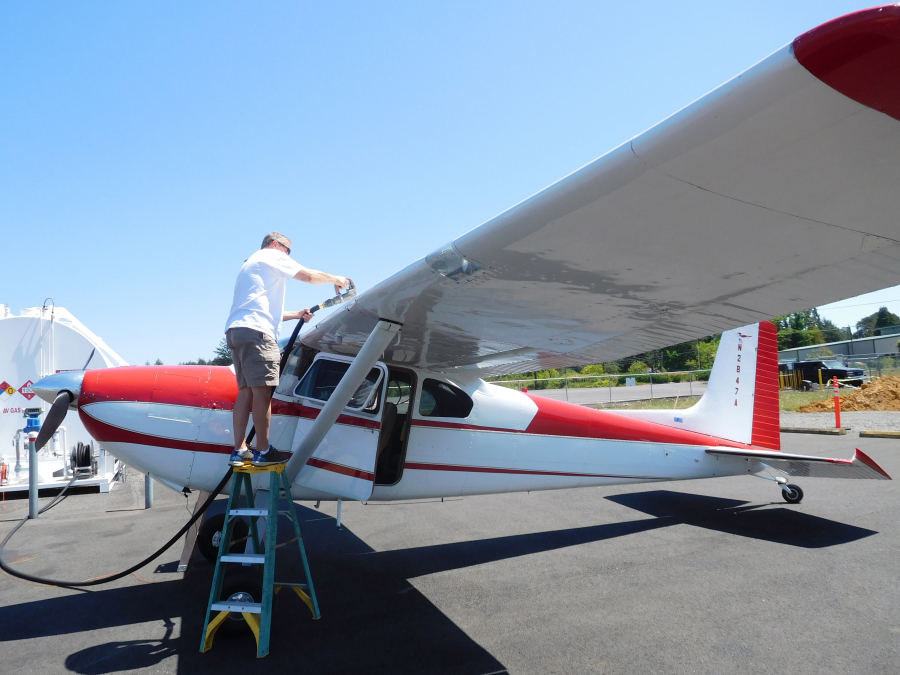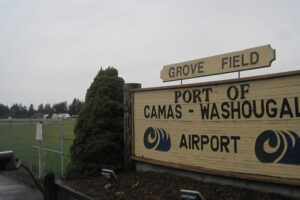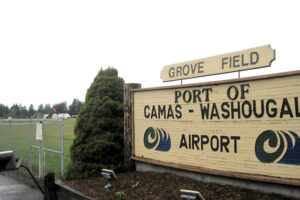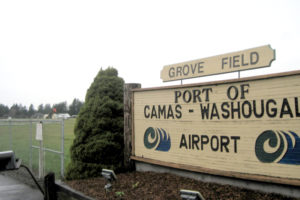Port of Camas-Washougal Commissioner Bill Ward looked at the numbers in front of him and frowned.
During the Port’s June 17 board of commissioners meeting, Ward and fellow commissioners Jon Spencer and Larry Keister discussed rate increases for the Port’s airport and marina. Ward noted that, while the financial projections for the marina looked good, the financial projections for Grove Field looked… not so good.
“This is a good example of how business activities help us,” Ward said. “In the case of the marina, we’ve got Riverside Marines rental income cranked in there, and we provide a customer base for Riverside Marines. If we could, in fact, develop airport-related activities at the airport, we’d get the same sort of a situation. We’d see our revenues improve.”
Increasing the number of businesses at or around Grove Field is a central focus of the airport development plan Spencer presented to the other commissioners earlier this year.
“If you really want to increase revenue at the airport, find ways to get more activity. That would be a great step,” Spencer said at the June 17 meeting. “It is a business unto itself running an airport, and you want as many businesses as you can to support it. You need that revenue.”




